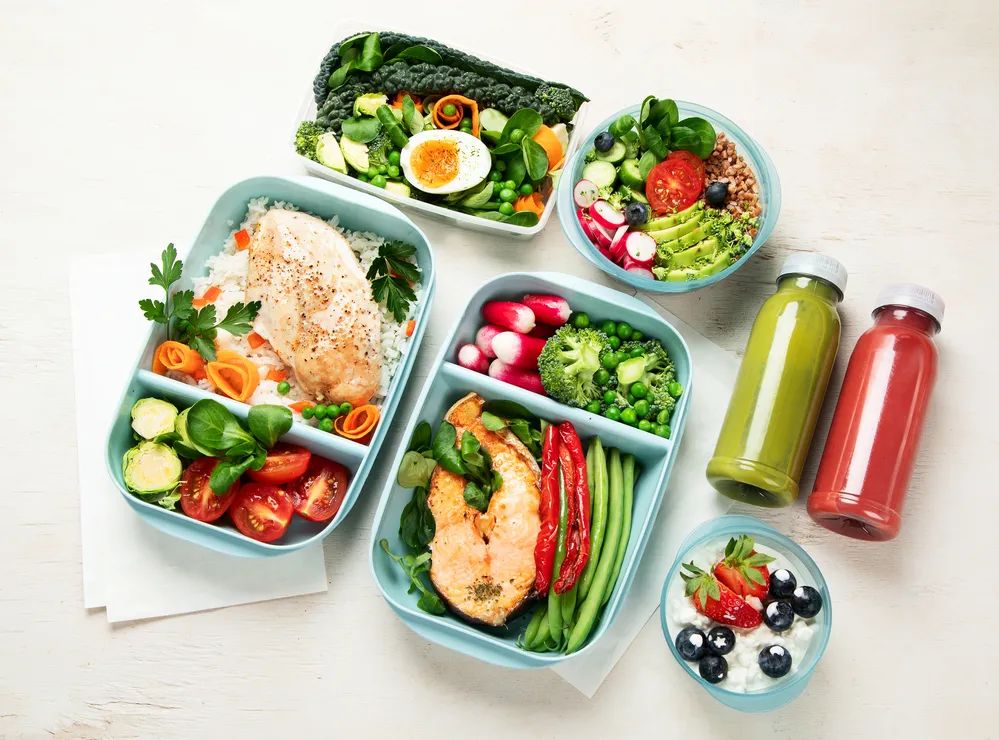Nutrition Guide for Children – Nutrition through Variety
2023-05-26
PARKWAY 百汇医疗 Nutrition for the children is based on the same ideas as nutrition for adults. Food packed with nutrients with no or limited sugar, saturated fat, or salt added to it is considered nutrient dense. Focusing on nutrient dense foods helps children get the nutrients they need while limiting overall calories. 1 For toddler years Growth slows somewhat during the toddler years, but nutrition is still a top priority. That time is also a time for parents to shift gears, leaving bottles behind and moving into a new area where children will eat and drink more independently. The toddler years are a time of transition, especially between 12-24 months, when they are learning to eat table food and accepting new tastes and textures. Breast milk and formula were perfect for a child as an infant, but now it’s time for toddlers to start getting what they need through a variety of foods. Toddlers need about 1000-1400 calories a day depending on their age, size, and activity level. Suggested daily serves are ½ serve of fruit, 2-3 serves of vegies, 1-1/2 serves of dairy, 4 serves of grains, and 1 serve of lean meats, eggs, nut, or seed pastes (like peanut or almond butter, or legumes). Milk is an important part of toddler’s diet and provide calcium and vitamin D to help build strong bones (amount of calcium should be around 700 IU and 600 IU vitamin D a day), 7 milligrams of iron each day as they are at risk for iron deficiency ( can affect growth and may lead to learning and behavioral problems) because they no longer drink iron-fortified formula and may not be eating iron-fortified infant cereal or enough other iron rich foods to make up the difference (cow milk is low in iron and if they drink a lot of cow’s milk may be less hungry and less likely to eat iron-rich food). To help prevent iron deficiency cow’s milk should be reduced on 16-24 ounces a day (2-3 cups), serve more iron-rich foods like meat, poultry, fish, enriched grains, beans, tofu together with foods that contain vitamin C like tomatoes, broccoli, oranges, and strawberries which improve the body’s iron absorption. 2 For 1-2 years Children ages 1-2 years should drink whole milk to help provide the dietary fats they need for normal growth and brain development. If overweight or obesity is a concern or if there is a family history of obesity, high cholesterol, or heart disease it should be reduced fat milk given (2%). After age 2, most children switch to low fat (1%) or nonfat milk. If a child doesn’t like milk or can’t eat or drink dairy products give some calcium fortified soy beverages, juices, fortified breads, and cereals, cooked dried beans, and dark green vegetables (broccoli, kale) to replace calcium. Later, there are no limits on the quantities of tasty fruits and veggies they can enjoy. Here are some recommendations for older children and teens to help them get into the 5-a-day habit. Plan to eat a serving or two of fruit with breakfast every day, mix it up like half a grapefruit, an apple, or a berry on cereal will be some of the good choices. Nutrient-dense foods are: Protein – seafood, lean meat and poultry, eggs, beans, peas, soy products, and unsalted nuts and seeds. Fruits should be fresh, canned, frozen or dried and low in added sugar. Vegetables lower in sodium like beans, peas. Whole grains such as whole-wheat bread or pasta, oatmeal, popcorn, quinoa, or brown or wild rice. Dairy should be fat-free or low-fat. The nutritional needs of an older child are calories 1,400-2,200 depending on growth and activity level, 4-6 ounces protein, 1,5-2 cups of fruits, 1,5-3 cups of vegetables and 5-7 ounces of grains. 3 How to improve nutrition Proper nutrition is crucial to consider when you care for children, as it protects against malnourishment, maintains a healthy immune system, prevents obesity, and reduces the risk of chronic disease. To improve nutrition and encourage smart eating habits there are some strategies which can help parents, and they are to have regular family meals, serve a variety of healthy food and snacks, be a role model by eating healthy yourself, avoid battles over food and always involve children in the process. The most important essential nutrient is water as the human body is made up of mostly water, and every cell requires water to function. Picky eating is often the norm for toddlers, the rapid growth of infancy, when babies usually triple in weight, a toddler’s growth rate – and appetite – tends to slow down. Toddlers also are beginning to develop food preferences. A toddler’s favorite food one day may hit the floor the next, or a snubbed food might suddenly become the one they can’t get enough of. For weeks, they may eat 1 or 2 preferred foods – and nothing else. Try not to get frustrated by this typical toddler behavior. Just make healthy food available and know that, with time, your child's appetite and eating behaviors will level out. In the meantime, here are some tips that can help you get through the picky eater stage. 1. Family style. Share a meal together as a family as often as you can. This means no media or distractions like TV or cell phones at mealtime. Use this time to model healthy eating. Serve one meal for the whole family and resist the urge to make another meal if your child refuses what you've served. This only encourages picky eating. Try to include at least one food your child likes with each meal and continue to provide a balanced meal, whether she eats it or not. 2. Food fights. If your toddler refuses a meal, avoid fussing over it. It’s good for children to learn to listen to their bodies and use hunger as a guide. If they ate a big breakfast or lunch, for example, they may not be interested in eating much the rest of the day. 3. Break from bribes. Tempting as it may be, try not to bribe a child with treats for eating other foods. This can make the "prize" food even more exciting, and the food you want them to try an unpleasant chore. 4. Try, try again. Just because a child refuses a food once, don't give up. Keep offering new foods and those your child didn't like before. It can take as many as 10 or more times tasting a food before a toddler’s taste buds accept it. 5. Variety: the spice. Offer a variety of healthy foods, especially vegetables and fruits, and include higher protein foods like meat and deboned fish at least 2 times per week. Help your child explore new flavors and textures in food. Try adding different herbs and spices to simple meals to make them tastier. 6. Make food fun. Toddlers are especially open to trying foods arranged in eye-catching, creative ways. Make foods look irresistible by arranging them in fun, colorful shapes kids can recognize. Finger foods are also usually a hit with toddlers. Cut solid foods into bite size pieces they can easily eat themselves, making sure the pieces are small enough to avoid the risk of chocking. 7. Involve kids in meal planning. Put your toddler's growing interest in exercising control to good use. Let you child pick which fruit and vegetables to make for dinner or during visits to the grocery store. 8. Tiny chefs. Some cooking tasks are perfect for toddlers (with lots of supervision, of course). 9. Crossing bridges. Once a food is accepted, use what nutritionists call "food bridges" to introduce others with similar color, flavor, and texture to help expand variety in what your child will eat. If your child likes pumpkin pie, for example, try mashed sweet potatoes and then mashed carrots. 10. A fine pair. Try serving unfamiliar foods, or flavors young children tend to dislike at first (sour and bitter), with familiar foods toddlers naturally prefer (sweet and salty). Pairing broccoli (bitter) with grated cheese (salty), for example, is a great combination for toddler taste buds. As a parent we need to do our best to patiently guide them on their path toward healthy eating. Article contributed by Dr. Martina Sunic Omejc, Pediatrician of Parkway.



































